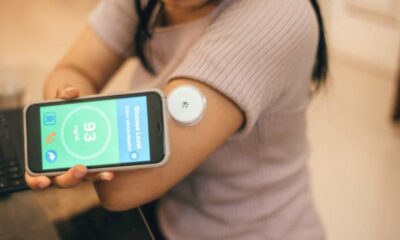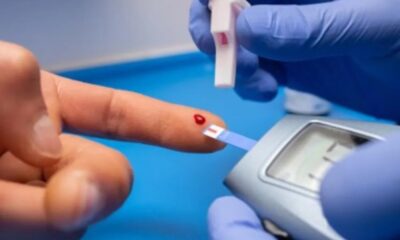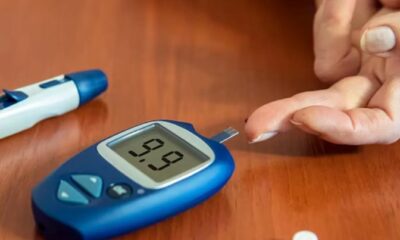Have you received a prediabetes diagnosis? Don’t panic! This guide equips you with the knowledge and tools to understand what prediabetes means, identify its symptoms and causes, and most importantly, explore effective strategies to reverse it. Prediabetes is a crucial window of opportunity to make lifestyle changes that can prevent the development of type 2 diabetes and safeguard your long-term health.
Understanding Blood Sugar Control: The Core Players
Before delving into prediabetes, let’s establish a foundation:
- Blood Sugar (Glucose): The primary energy source for our cells. Food is broken down into glucose, which enters the bloodstream.
- Insulin: A hormone produced by the pancreas that acts like a key, unlocking the doors of your cells and allowing glucose to enter for energy production.
What is Prediabetes?
Prediabetes is a condition characterized by higher-than-normal blood sugar levels, but not high enough to be classified as type 2 diabetes. It signifies a warning sign that your body is struggling to manage blood sugar effectively. Left unaddressed, prediabetes can progress to type 2 diabetes, increasing the risk of serious health complications.
Symptoms of Prediabetes:
Early prediabetes often presents with subtle symptoms that can be easily overlooked. Here are key signs to watch out for:
- Increased thirst and urination: The body tries to expel excess sugar through urine, leading to frequent urination and increased thirst.
- Excessive hunger: Cells are starved for energy due to the inability to utilize blood sugar effectively, leading to increased hunger.
- Unexplained weight loss: The body might break down muscle tissue for energy when glucose utilization is impaired. However, this is not always a symptom.
- Fatigue and tiredness: Cells deprived of glucose experience a lack of energy, leading to fatigue.
- Blurred vision: High blood sugar levels can affect the lenses in the eyes, causing blurred vision. (This symptom is more commonly associated with established diabetes.)
If you experience any of these symptoms, it’s crucial to consult your doctor for a diagnosis and blood sugar testing.
Causes of Prediabetes
The exact cause of prediabetes is not fully understood, but several factors contribute to its development:
- Genetics: A family history of diabetes increases the risk.
- Lifestyle Factors:
- Excess weight or obesity: Excess body fat can impair insulin sensitivity.
- Physical inactivity: Regular exercise improves insulin sensitivity and overall health.
- Unhealthy diet: Diets high in processed foods, sugary drinks, and unhealthy fats contribute to prediabetes.
- Gestational diabetes: Women with a history of gestational diabetes are at higher risk for developing prediabetes later in life.
- Polycystic ovary syndrome (PCOS): This hormonal imbalance can affect insulin sensitivity.
- Certain ethnicities: Certain ethnic groups are at a higher risk for developing prediabetes.
Diagnosing Prediabetes
Several tests can diagnose prediabetes:
- Fasting Blood Sugar (FBS): Measures blood sugar levels after a night of fasting.
- Hemoglobin A1c (A1c): Indicates average blood sugar control over a 2-3 month period. This is often the preferred test for diagnosing prediabetes.
- Oral Glucose Tolerance Test (OGTT): Measures blood sugar levels after drinking a sugary drink.
Living with Prediabetes: The Power of Reversal
The good news is that prediabetes is often reversible through lifestyle modifications. By implementing these strategies, you can improve your blood sugar control, prevent the progression to type 2 diabetes, and enhance your overall health:
- Diet and Nutrition:
- Focus on whole foods: Prioritize fruits, vegetables, whole grains, and lean protein sources.
- Limit processed foods: Processed foods are often high in sugar, refined carbohydrates, and unhealthy fats.
- Reduce sugary drinks: Opt for water, unsweetened tea, and coffee instead of sugary beverages.
- Practice portion control: Learn appropriate serving sizes to avoid overconsumption.
- Consider consulting a registered dietitian: A registered dietitian (RD) can personalize a meal plan based on your preferences and needs.
- Exercise and Physical Activity:
- Aim for at least 150 minutes of moderate-intensity exercise or 75 minutes of vigorous exercise per week.
- Find activities you enjoy: Physical activity doesn’t have to feel like a chore. Find activities you find fun and can incorporate them into your routine.
- Start small and gradually increase intensity and duration over time.
- Consider incorporating strength training exercises to build muscle mass, which improves insulin sensitivity.
- Find an exercise buddy or join a fitness class for added motivation and support.
Additional Strategies and Considerations:
- Regular Blood Sugar Monitoring: Monitoring blood sugar levels regularly allows you to track progress and make necessary adjustments to your plan.
- Doctor Visits and Communication: Maintain regular communication with your doctor to discuss your progress and address any concerns.
- Support System: Connect with a diabetes educator, support groups, or online communities for guidance, motivation, and emotional support.
- Prediabetes Prevention Programs: Many communities offer programs specifically designed to help individuals with prediabetes make healthy lifestyle changes.
Living a Fulfilling Life with Prediabetes
A prediabetes diagnosis can be empowering. By embracing these strategies and making positive lifestyle changes, you can take control of your health and prevent the development of type 2 diabetes. Remember, you are not alone in this journey. Millions of people worldwide are successfully managing prediabetes and living healthy lives. With dedication and a positive mindset, you can achieve the same!
Disclaimer: This information is intended for general knowledge and should not be a substitute for professional medical advice. Always consult with your doctor to create a personalized plan for managing prediabetes.

 Diabetology2 weeks ago
Diabetology2 weeks ago
 Diabetology1 week ago
Diabetology1 week ago
 Diabetology5 days ago
Diabetology5 days ago
 Diabetology6 days ago
Diabetology6 days ago
 Diabetology6 days ago
Diabetology6 days ago
 Diabetology3 days ago
Diabetology3 days ago
 Diabetology3 days ago
Diabetology3 days ago
 Diabetology1 day ago
Diabetology1 day ago












